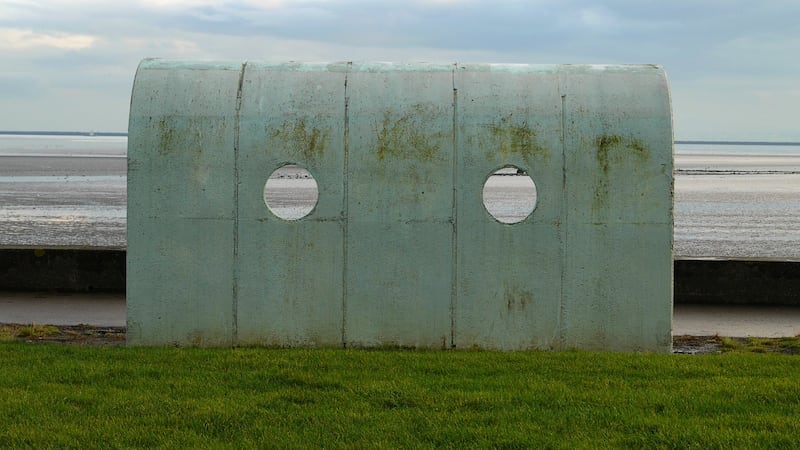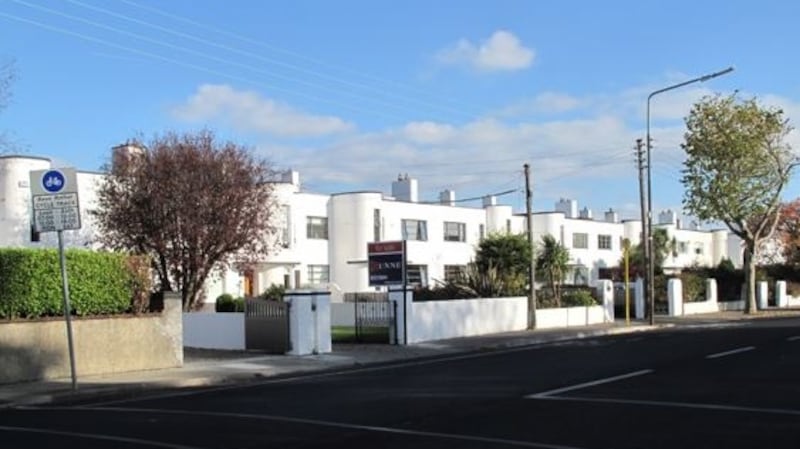The 1970s Met Office in Glasnevin, a 1950s bathing shelter in Clontarf, a 1960s church, and a 1980s port building have been recommended for addition to Dublin city's Record of Protected Structures (RPS) by Minister for Housing Darragh O'Brien.
The buildings are among 1,720 “structures of architectural heritage interest” in the city which have been rated by the National Inventory of Architectural Heritage (NIAH) as meriting protection.
The majority of the buildings are already listed on RPS, but about 500 new additions, many of which date from the late 20th century, have been recommended to Dublin City Council for inclusion.
These include the Met Office on Glasnevin Hill built in 1979 and described by the NIAH as "good example of contemporary architecture tailored to meet the specific needs of the client". The brief for architect Liam McCormick, best known for his strikingly modern churches in Donegal, required weather forecasters be given a good view of the sky. This was achieved by modelling the office on an ancient pyramid with sloping walls punctuated by balconies and observation points. "The office was originally clad in limestone which, in a twist of irony, began to warp under the damp Irish climate and it was subsequently refaced with metal," the NIAH said.
An even later building, the Port Centre office on East Wall Road has also been recommended for addition to the RPS. The concrete block was designed by Conor Dwyer of Scott Tallon Walker in 1954 but only built in 1980-1981.
A factory in Coolock has also been deemed worthy of protection. The Cadbury's factory on the Old Malahide Road, completed in 1956, is described as a "distinctive part of the architectural landscape of Coolock".

The Church of Our Lady Mother of Divine Grace in Raheny built in 1962 to seat 1,500 parishioners in the growing suburb, is also praised by the NIAH which said its "soaring façade, a triangle of triangles, has been compared to the Hiberno-Romanesque doorway of Clonfert Cathedral as filtered through contemporary modernism".
Miami makeover
1930s bathing shelters on Bull Island designed by architect Herbert Simms are already on the RPS, but the NIAH is recommending other shelters of a similar design on Clontarf promenade, built in the 1950s following Simms' death, are also protected. The recommendation follows the demolition last summer by the city council of a disused lifeguard shelter.

“The recent controversy caused by the demolition of the lifeguard station at Bull Wall, originally on the shoreline but marooned inland following the natural reclamation of North Bull Island, proves that there is a growing appreciation for twentieth-century architecture and an appetite for its protection,” the NIAH said.
The promenades at Bull Wall and Clontarf were “given a Miami makeover in the 1930s and 1950s with public amenities demonstrating the full potential of reinforced concrete” it said. “The amenities at Clontarf include hooded shelters, some with round openings and others with diamond-shaped openings, and a bandstand whose futuristic silhouette would not have been out of place in contemporary science fiction cinema.”

A number of houses have also been selected including a full row of 1940s homes at 646-680 Howth Road, Raheny known as Sunshine Houses. These are a “stylish group of houses on Howth Road which, designed by Robinson and Keefe,” featuring “cubic plans, gleaming white walls, canopied doors, curved staircase outshots, large picture windows, and parapeted flat roofs, all influenced by international trends including Art Deco, De Stijl and the Bauhaus,” it said.
Buildings on the RPS are subject to strict limitations on any changes and demolition is permitted only in exceptional circumstances.
Mr O’Brien said the selection reflected a growing appetite to protect 20th century heritage.
“I encourage the elected members of Dublin City Council to look favourably on the recommendations I am making today to ensure that our unique architectural heritage, whether it is a gem of the long distant past or of more recent construction, is protected for the benefit of our citizens, both today and for generations to come”.










